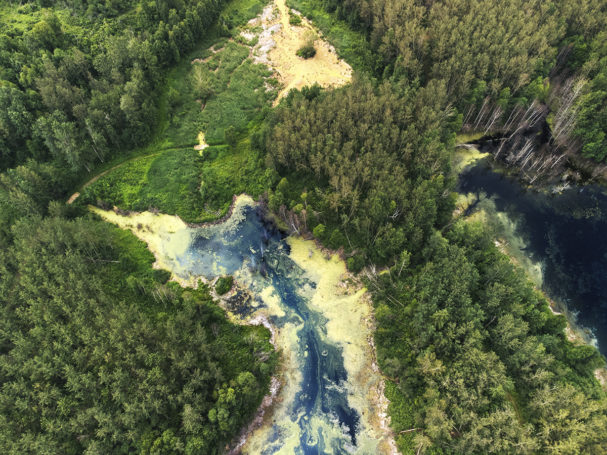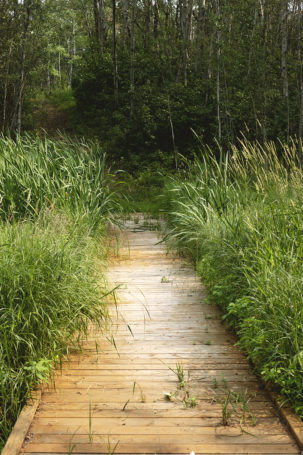September 7, 2021
Edmonton & Area Land Trust creates opportunities to maintain and conserve ecosystems
Carlie Lewis brushes the dirt and woodchips off her hands as she smiles at her morning’s work.
The newly planted pollinator garden overlooks a beaver pond on the Smith Blackburn Homestead. Every year, it will flower and feed many of the property’s denizens. These include clouds of swallowtail butterflies, many species of bees and other animals and insects that play an integral role in maintaining the property’s biodiversity.
“If you have a high biodiversity of plants, you’re going to have that high biodiversity of pollinators,” Lewis says. “A lot of us think of conservation in terms of our national and provincial parks, but it’s important everywhere.”
Though the Smith Blackburn Homestead is just a few kilometres east of Elk Island National Park, the property is not provincially or federally designated. Instead, it’s one of 14 conservation lands stewarded by the Edmonton & Area Land Trust (EALT). The EALT was established in 2007 through a partnership between Edmonton Community Foundation and five other organizations. Its mission is to conserve nature and engage people in land stewardship.

In 2018, the Smith Blackburn Homestead was donated to the EALT by a landowner who wishes to remain anonymous. To care for its properties, the EALT relies on its many volunteers, including a team of 75 Conservation Land Stewards.
As a steward, Lewis maintains trails, repairs fences, removes invasive weeds, restocks geocaches and reports vandalism. Volunteering for the EALT is a perfect fit for the 29-year- old who earned her BSc and certificate in land reclamation in biology from the University of Alberta. She credits her passion for nature to her mom.
“She was a forester in her early career,” Lewis says. “I spent my youth in the bush with her, bombing around in a truck and up in helicopters, mapping pinecones and getting my boots stuck in the mud. I’ve always had an intuitive connection with nature.”
The EALT’s Conservation Land Stewards are a diverse mix of people who are connected through their love of nature.
Adrian Joosten is in his mid-60s and has been volunteering with the EALT in various capacities for years. Most recently, Joosten and his wife became stewards of the EALT’s Glory Hills site.
Glory Hills is a 110-acre property situated in the transition zone between the Boreal Forest and Aspen Parkland Natural Regions near Stony Plain. Joosten has implemented many of the conservation principles of the EALT on his acreage at home.
“A couple of years ago, my mature spruce trees went to seed, and we’ve now got an abundance of small spruce trees growing around the property,” Joosten explains. “I’ve been collecting them and putting them into nursery beds, helping them to grow and then looking to transplant them back into other areas on the property.”
The EALT’s Conservation Stewards are volunteers, but, in place of cash, they’re paid in what Joosten feels is a more valuable currency.
“I’ve been reading up on all the health benefits, the forest baths, the sun exposure. These are so important for our well-being,” he says. “As a great de-stressor, taking a walk in the woods is wonderful.”

This is an important part of the EALT’s mission. Not only is it conserving natural ecosystems, it’s working to connect the public to the natural beauty of these lands. Of the EALT’s 14 properties, 11 are open to the public. Every day, it is working to enrich visitors’ experiences now and for the future.
“We see a need for the preservation of a land,” Joosten says. “It has to be held as pristine as it can, not only for our enjoyment, but for the enjoyment of generations to come.”
Listen to our podcast episode on the Smith Blackburn Homestead